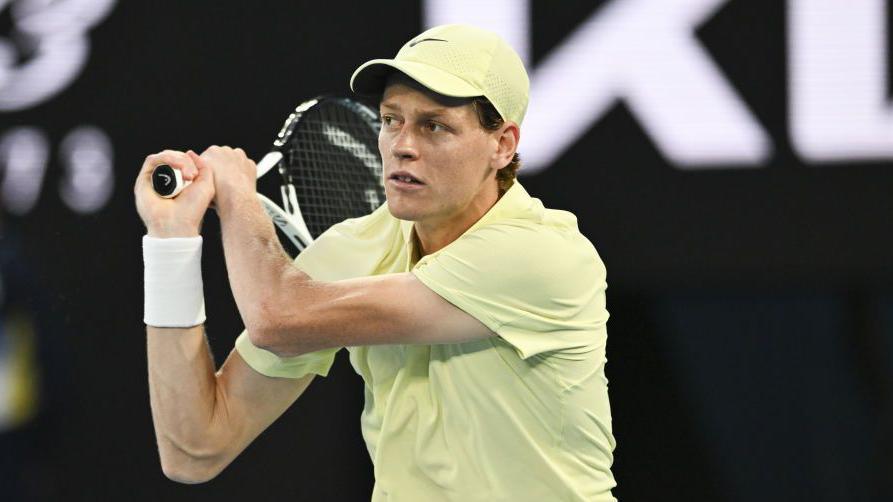Top five men's tennis players who were banned for doping
Throughout its history, tennis has seen powerful swings of fortune, few as firmly shaking the game as doping bans. Tennis is a game of endurance and skill, and with plenty of mental toughness, players still sometimes cut corners-sometimes without realizing it, sometimes on purpose.
The International Tennis Federation (ITF) and the World Anti-Doping Agency (WADA) have collaborated closely to ensure the integrity and fairness of the sport. However, historical evidence indicates that even top players have faced consequences related to the use of prohibited substances.
Fated differently, but all these men have left their imprint on tennis; separately, examples of doping scandals at their most touching moments. Who are these individuals, and what were the details surrounding their respective suspensions?
In this article, let’s look at the top five male tennis players who faced doping allegations and the consequences that followed.
5. Viktor Troicki (2013-2014)

Viktor Troicki, unlike others on the list, was not found to have tested positive for any prohibited substance; however, he received an 18-month ban from the governing body for his refusal to submit a blood sample. During the doping control at the 2013 Monte Carlo Masters, Troicki only provided a urine sample, citing illness and a longstanding phobia of needles as reasons for declining to give a blood sample.
Due to the absence of justifiable reasons for Troicki's refusal, the ITF imposed an 18-month suspension on him, which was subsequently reduced to 12 months following an appeal to the Court of Arbitration for Sport (CAS). Troicki made his return in 2014 with a ranking of 847, necessitating a restart of his career on the Challenger circuit. He successfully reclaimed his form by winning the title at the 2015 Sydney International and contributed to Serbia's victory in the Continental Cup in 2010.
4. Richard Gasquet (2009)

In March 2009, authorities discovered cocaine in the system of the French player, resulting in a two-year suspension. The doping incident involving Richard Gasquet was both unusual and contentious. During that same month, the Frenchman tested positive for cocaine, leading to the imposition of a two-year ban. Nevertheless, Gasquet maintained that he had never intentionally consumed the substance, asserting that it had entered his system after kissing a woman at a nightclub in Miami.
The ITF initially imposed a one-year suspension on him; however, an independent tribunal later ruled in his favor, subsequently reducing the ban to just six weeks. The CAS later confirmed this ruling, noting the negligible traces of cocaine detected in his sample.
Former world No. 10 and semifinalist at Wimbledon in 2007, Richard Gasquet made his return just in time for the 2010 Australian Open. He has won 16 ATP singles titles, briefly reached No. 7 in the world, and helped France win the Davis Cup in 2017.
3. Marin Cilic (2013)

A Grand Slam champion with an otherwise clean record, Marin Cilic found himself embroiled in controversy in 2013 when he tested positive for nikethamide, a stimulant that increases oxygen intake. The Croatian asserted his innocence, claiming he was unaware of ever ingesting the substance and insisted that he unintentionally consumed it through glucose tablets bought from France.
Initially, Cilic received a nine-month ban. He appealed to the Court of Arbitration for Sport (CAS), which ultimately shortened the suspension to four months. Although he lost his ranking and earnings for the 2013 French Open, Wimbledon, and BMW Open, his return to the sport was strong.
In a year, Cilic won the US Open in 2014, his first and only Grand Slam title. Cilic won 21 singles titles throughout his career, reached a maximum ranking of No. 3, and led Croatia to victory in the 2018 Davis Cup.
2. Jannik Sinner (2025)

Officials have caught Australian Open 2025 Champion Jannik Sinner using clostebol, an anabolic steroid, marking one of the most remarkable doping incidents in recent history. The scandal of 2024 reverberated throughout the tennis community, particularly given Sinner's background of dedication and a reputation founded on integrity.
The ITIA reported that his physiotherapist had inadvertently applied the substance to a cut on Sinner’s finger, which later may have entered his bloodstream during later massage sessions. WADA, which initially cleared him, would later appeal, insisting that “no fault or negligence” was an incorrect ruling.
Amid growing scrutiny, Sinner accepted a three-month suspension, missing crucial tournaments but returning just in time for the French Open for this year’s French Open (2025). Sinner has won the 2024, and Australian Open 2025 to go with the 2024 US Open.
1. Andre Agassi (1997)

Few names in tennis history shine as brightly as Andre Agassi’s, but the American legend’s legacy includes a dark chapter. In 1997, a year marked by many changes in his life, Agassi tested positive for methamphetamine. He consistently asserted his innocence, claiming that the result stemmed from an incident in which his drink was spiked. The ATP accepted this explanation, resulting in a mere three-month suspension.
However, in 2009, Agassi shocked the tennis community by revealing in his autobiography that he had intentionally consumed crystal meth and had falsified the ‘spiked drink’ story.
The disclosure ignited a massive controversy regarding retroactive penalties, given that the infraction occurred prior to the establishment of WADA in 1999 and the ITF's assumption of the ATP's anti-doping program in 2007, resulting in no additional measures being implemented. Agassi has won eight Grand Slam titles along with an Olympic gold medal (in Atlanta, 1996) and a career Grand Slam.
Cover Credits - Tennis.com


.png)


Leave a Reply